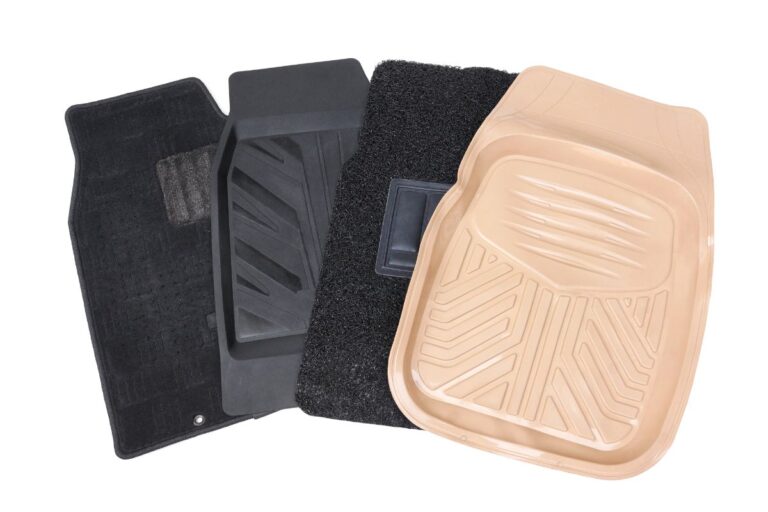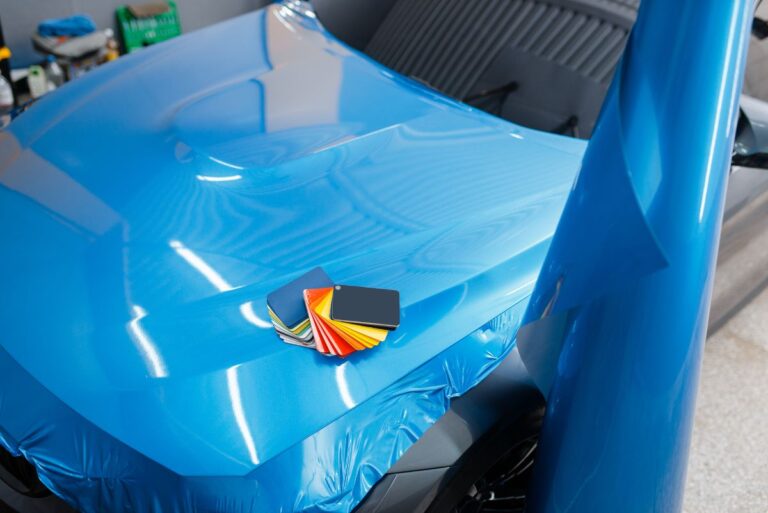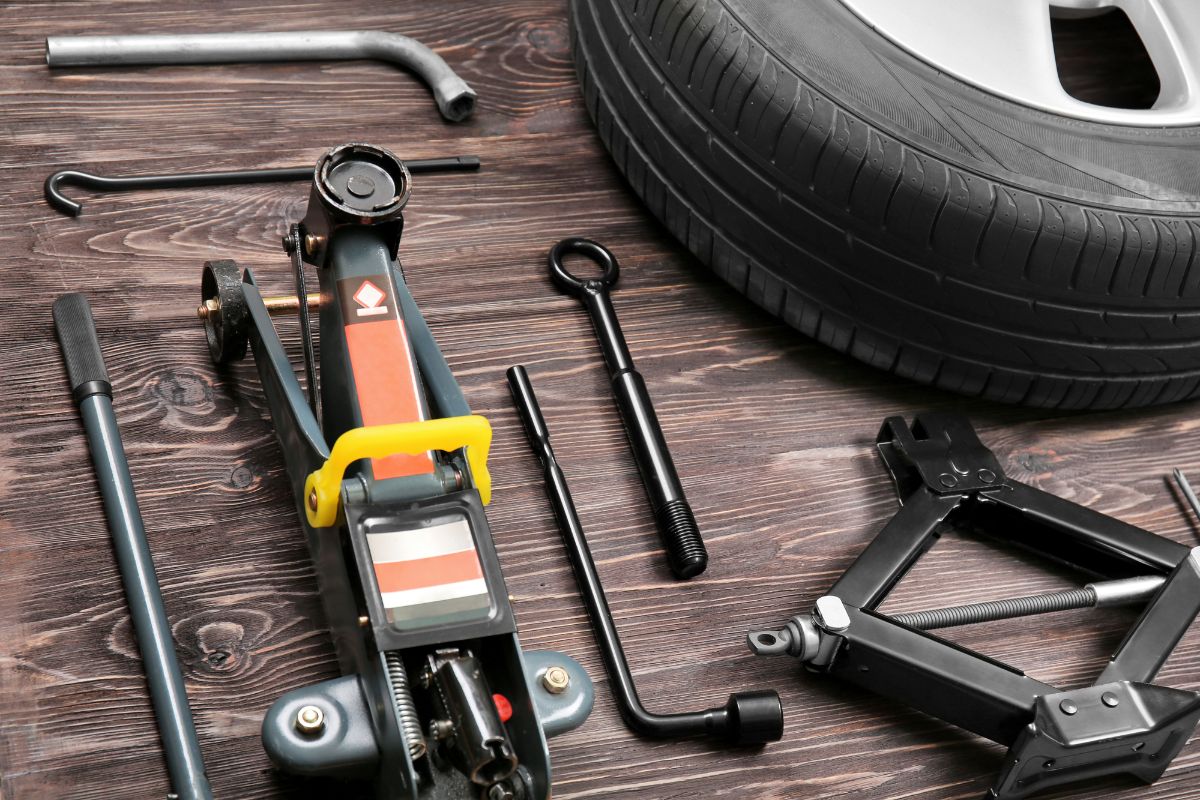
In this article, I discuss the different types of car jacks available, their functions, the features of which jack is the best match for your needs, and finally, what kind of jack you should purchase to meet your requirements.
Any jack can be a good one, but if you’ve selected the best ones, they’ll be superior to all other items you have in your hands.
Okay, so it’s a little over the top to use an analogy. However, there’s no doubt about the importance of having a quality garage jack.
This applies to any car owner, regardless of whether he’s an expert mechanic, a weekend DIYer, or a complete beginner at all things automobile.
However, you’ve likely discovered that numerous types of jacks are available. Within a single class of jack, there are plenty of choices. How do you determine the most suitable option to meet your needs and budget?
Well, I’m going to explain how different types of car jacks operate with respect to their pros and cons, as well as the reasons you should have a specific type. Read on to find out more about the best jack suitable for you!
Car jacks explained
Let’s start with the fundamentals. A car jack is a mechanical device designed to lift the vehicle entirely or partially from the floor. Why would you need to use this device? There are a variety of reasons, such as:
- Removing the flat tire
- Change your oil
- Inspecting for damage
- Making repairs
- Rotation and changes to tires for the season.
Whatever your expertise level, there are many excellent motives (and reasons!) to lift your car up.
The basic categories of car jack
There are two types of car jack; hydraulic and mechanical. This is a brief overview of both.
Mechanical type of jack
Jacks that fall in this category use only mechanical methods to generate lift.
This could involve using a screw lift and a lowering-hinge mechanism that gradually ratchets a vehicle up and down a small amount at a time.
The basic scissor jack is in this category, as is the ultimate savior for many off-roaders, the high-lift jack. Get a quick step-by-step guide to using high lift jacks here.
Hydraulic type of jack
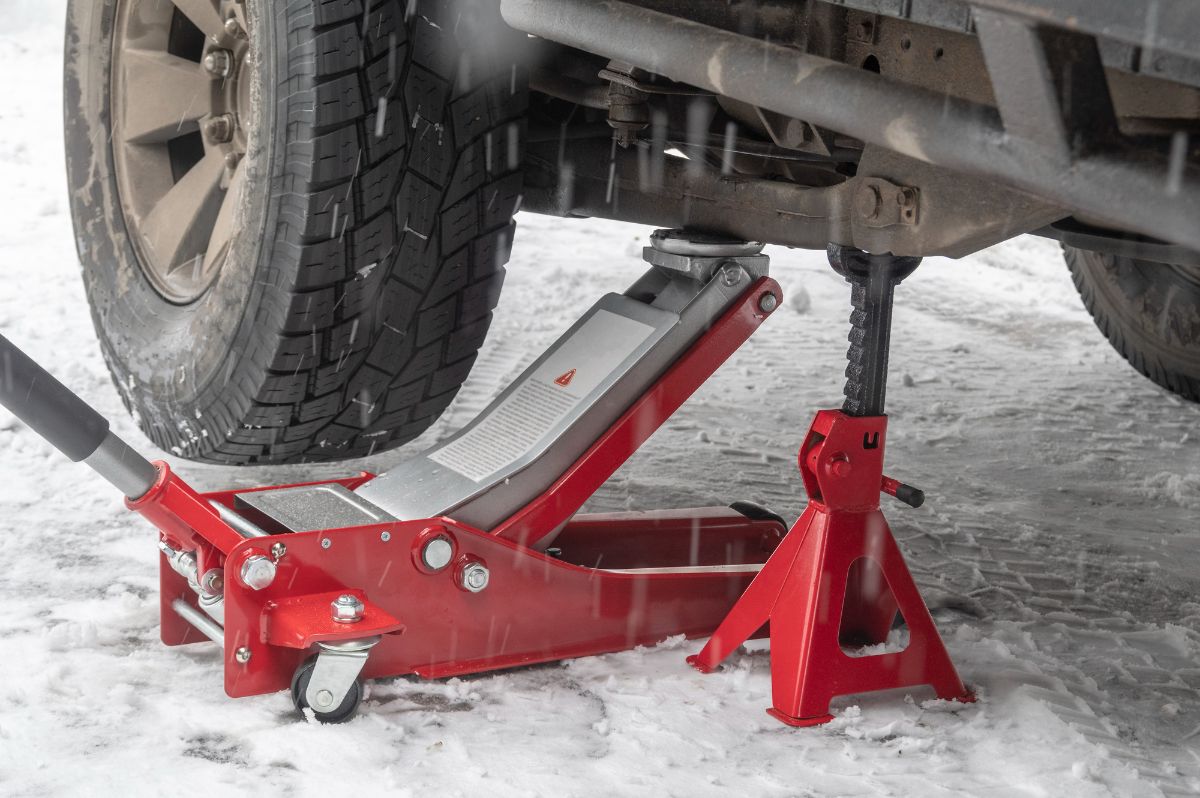
These jacks employ a vertical or horizontal hydraulic cylinder to lift massive objects. What is the function of hydraulics?
Without going into the science of physics, the hydraulic system makes use of the fact that it’s extremely difficult to compress a fluid. The jack is equipped with a reservoir that is filled with oil.
When you lift the handle, a portion of the oil is pulled out of the reservoir. When the handle is lowered, part of the oil gets transferred to the central cylinder beneath the piston.
When the amount of liquid under the piston rises and the pressure (which continues to increase since the oil doesn’t compress), it increases the pressure on the cylinder. The pressure will remain high until the oil drains out and flows through the reservoir.
The most popular kind of hydraulic jacks are floor and bottle jacks. See a quick step-by-step guide to using a floor jack safely.
The four mainstream types of jack
1. Floor jack
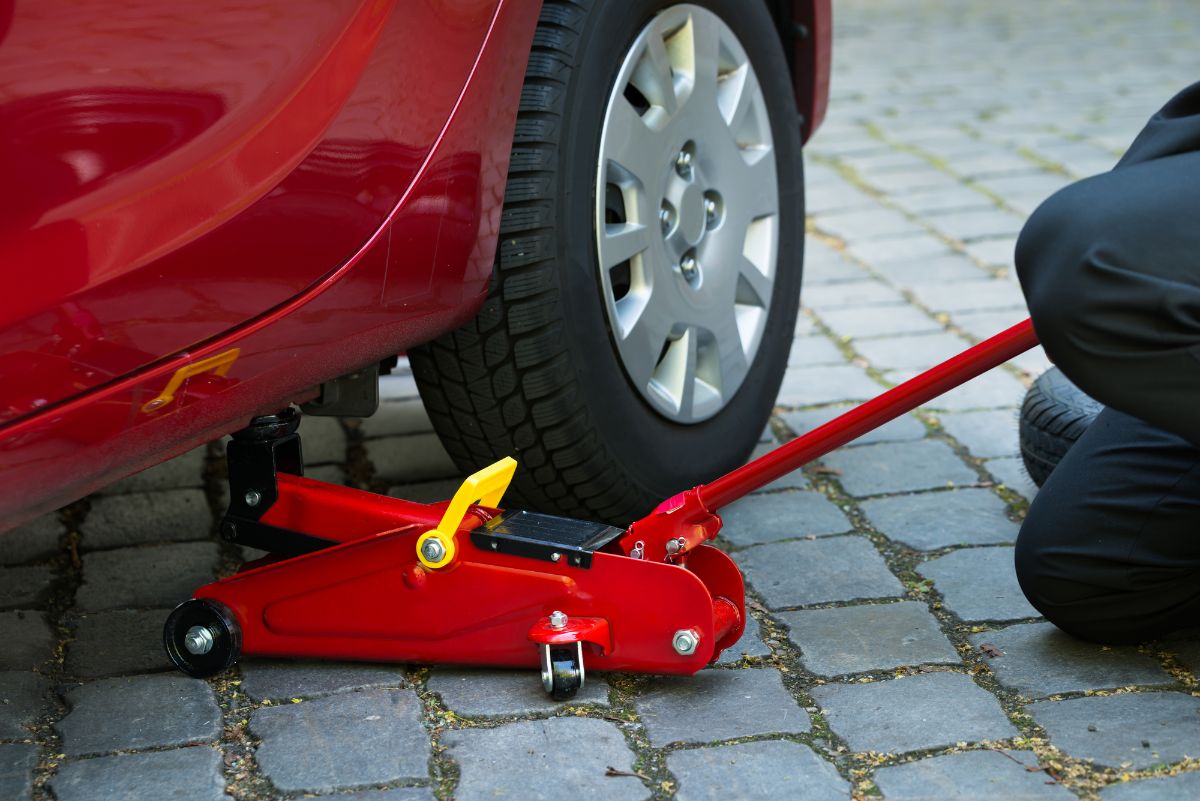
If you’ve ever watched car racing or television shows or videos of car repairs, you’ve probably witnessed a floor jack in operation. It’s a bit like a skateboard but with an extended handle positioned in a slant at one side.
They’re ideal for garages as they can roll on four wheels effortlessly. It’s not difficult to put them in place, and once they’re there, the handle is long enough to make lifting and lowering them easy.
If you’re in a hurry and you need to get your vehicle jacked up, a floor jack is sure to be your best bet with its speedy raising and lowering. A lot can raise a vehicle off the ground with less than 10 pumps on the handle.
Once you’re done with it and they’re off in a flash. They’re small enough to squeeze in under the smallest of riders.
Floor jack pros
- Available for vehicles with low clearance in low-profile models.
- Can operate while standing.
- Easy to maneuver and set up.
- It gives a professional appearance to your garage!
- It is suitable for most private vehicles, both medium and small-sized.
Floor jack cons
- It’s bulky and not ideal for tossing in the trunk.
- Very heavy.
- They’re generally suitable for taller trucks or 4x4s.
- Models designed for huge vehicles are very expensive.
- It is not useful for anything other than lifting vehicles.
Floor jacks are suitable for:
- Don’t be tempted to bend over to lift your vehicle.
- You drive your car in a race and require quick tire repairs or tire replacement.
Floor jacks are unsuitable for:
- Anyone who requires a jack that is portable (but why not get the one you want?)
- The owners of extremely large or very heavy or tall vehicles.
- Space-constrained people who need to use their garage.
It’s hard to deny the awesomeness of having a floor jack. Having one can give your garage instant credibility! They’re also among the simplest jacks to use all around.
2. High lift jack
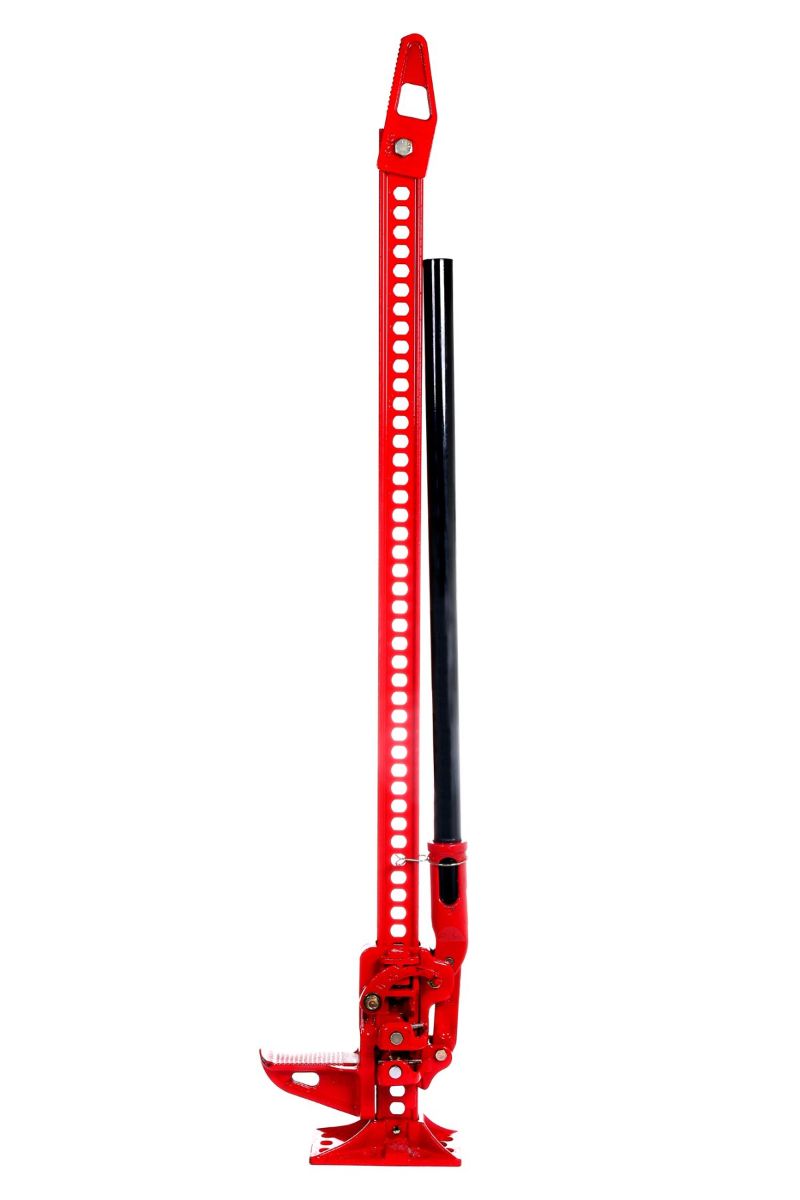
Sometimes you’ll need to stand up, way up! A high-lift jack offers the most clearance and is perfect for those off-roaders and trailer owners. These are more suited for emergencies and recovery than standard garage repairs and are a potential off-roader’s most trusted companion.
They’re quite tall; however, they’re slim, which means it’s not a problem to locate the high-lift jack inside your vehicle (or perhaps strapped onto the exterior). This is a fantastic option to have in case of a sudden repair out in the backcountry!
You must be extremely cautious when operating the high-lift jack. They are equipped with a tiny footplate and can be unstable.
There is also the risk of injury to a person due to the inability to maintain control of the handle while the high-lift is used to lift a weight. Like all jacks, it’s crucial to use the high-lift with caution and be cautious.
It’s crucial to remember that a high-lift jack needs greater strength to work compared to the other three kinds of jacks.
High-Lift vs. Hi-Lift
Dang it, but wouldn’t you know these two terms don’t mean the same thing? Although you’ll hear these two terms being used interchangeably, it’s important to know that Hi-Lift is actually a type of high-lift jack. Also, although all Hi-Lift jacks are hi-lift jacks, not all hi-lift jacks are HiLift jacks. D’ya know what I mean?
High-lift pros
- Lifts even the highest vehicles.
- Perfect for off-roading.
- The ratcheting system is easy to use but incredibly strong.
High-lift cons
- It is more hazardous to operate than smaller jacks.
- Not suitable for all cars or vehicles.
- Small bottom plates mean they’re wobbly.
High-lift jacks are suitable for:
- Owners of 4×4 and Jeeps who love off-road.
High-lift Jacks aren’t suitable for:
- Anyone who has anything which isn’t off-road equipment.
- Individuals who do not possess the strength in their upper bodies to use the jack.
Simply put, if you do not go off-road, then you won’t require a high lift jack. If you have taller vehicles on highways and streets, buy the bottle or scissor jack with the tallest maximum height.
3. Hydraulic bottle jack
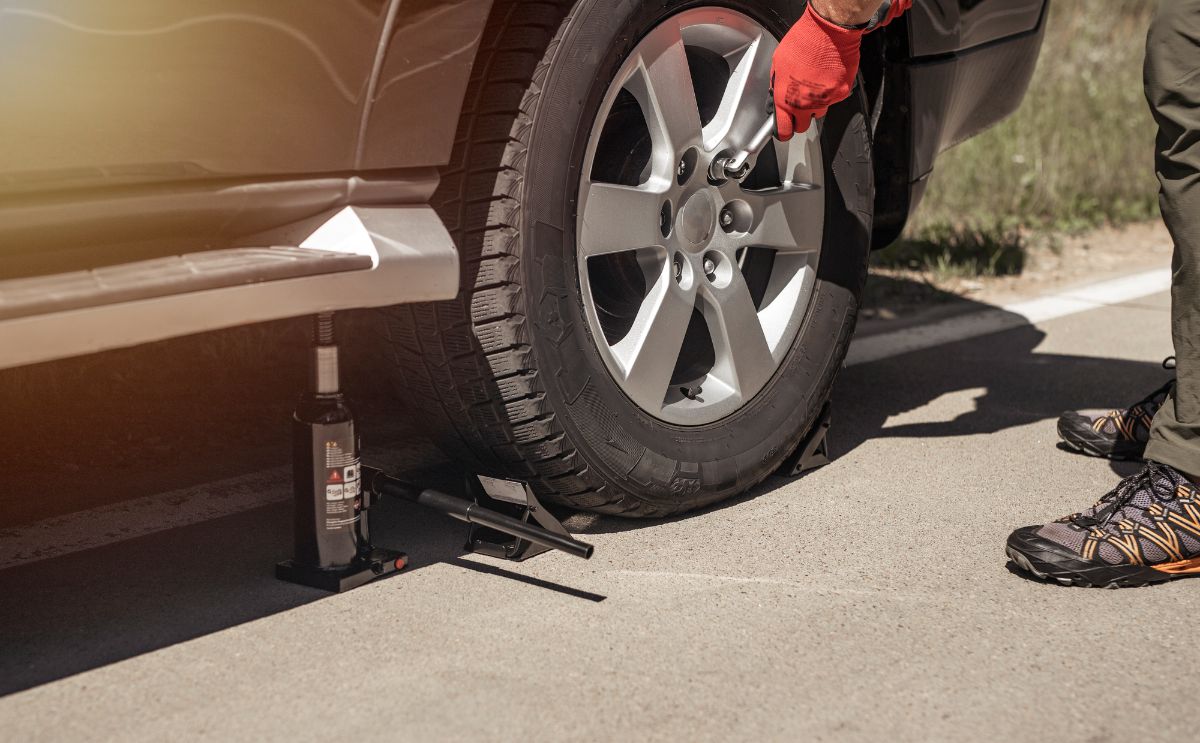
These highly adaptable jacks are also one of the most popular. When using a vertical hydraulic cylinder, the operator’s job is to work the handle up and down. The result is that even heavy vehicles are raised effortlessly.
The best models feature a broader base to provide extra stability. They can even work with their backs. (You’ll not be lifting cars this way; however, it’s helpful for pushing large objects or even for bent metal bars.
It’s an essential item to have for every prisoner!) You’ll see this type of jack being used in construction sites to support the floor or for supporting foundations.
Typically, they are quite compact and come in a wide range of capacities for lifting. The most common sizes for use in the automotive sector range between 2-12 tonnes. If you feel you’ll need them, you could locate them in large sizes, such as 20, 50 -, and even 100 tons.
Hydraulic bottle jack pros
- Available in sizes to raise any vehicle.
- Simple to store.
- Easy to use.
- Affordable cost.
- Usually, it is a tall lift.
- Flexible (can be used in projects that are not automotive).
Hydraulic bottle jack cons
- You must crouch or squat for operation.
- It is essential to be near the vehicle that you will be using.
- Too high to fit in smaller vehicles.
Hydraulic bottle jacks are suitable for:
- You own a vehicle that is moderately tall.
- You are limited in storage or workspace in your garage.
- You’ll need a jack to work on construction or automotive projects.
- You need a jack that you can carry along.
Hydraulic bottle jacks are unsuitable for:
- Owners of small, low vehicles.
- Someone who doesn’t really plan to lift their vehicle at all times.
With the benefits of accessibility, cost, and flexibility, it’s difficult to come up with a reason not to own one of these jacks.
4. Scissor jack
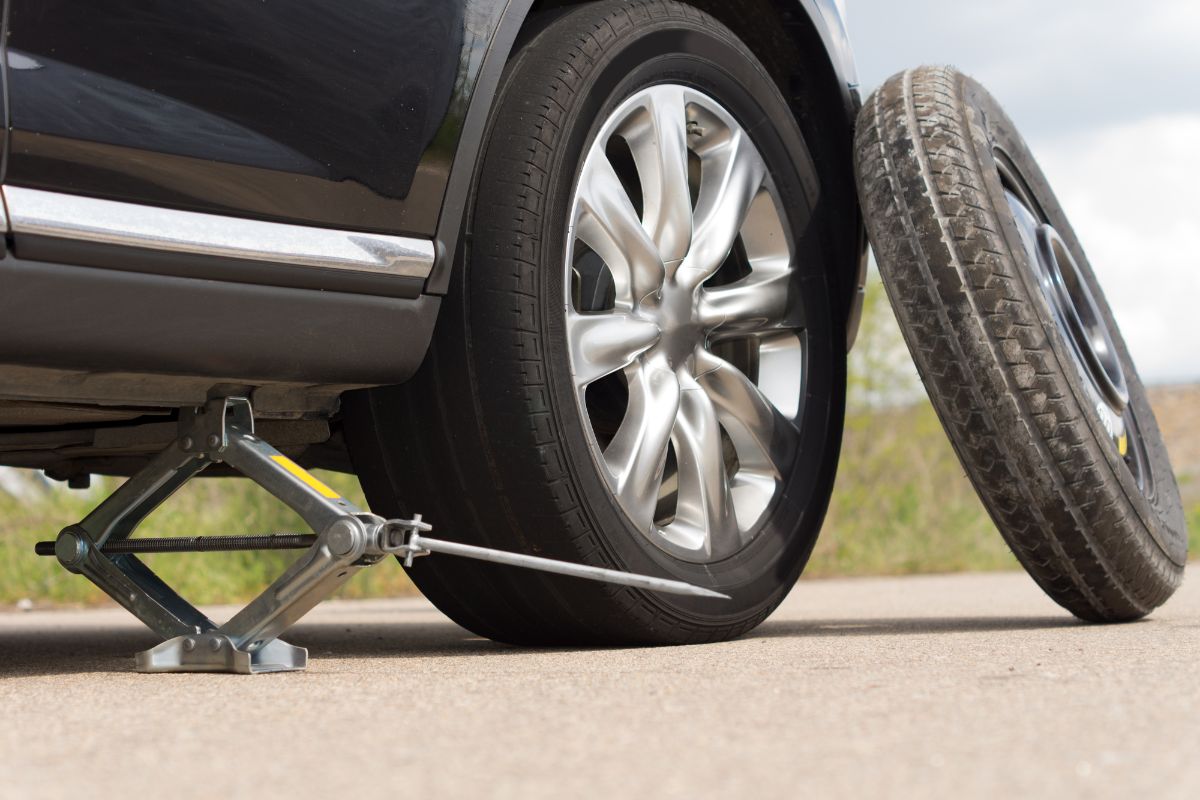
It is the simplest kind of jack and one of the most popular styles. Many vehicles have an ordinary scissor jack that comes in your spare tire. (Before purchasing a replacement, you might be interested in determining whether you have one!)
As the name implies, the scissor jack comprises two interconnecting scissor mechanisms. There’s a base to rest on at the bottom and the lifting saddle on the top, in the center of the jack joining the two ends with hinges that are their own and an extended threaded screw.
When the screw is turned, it can open or close the two joint scissors and raise or lower the saddle.
A scissor-jack can be folded up neatly and compact, and it’s easy to transport in between uses. They’re light and can be carried around in your trunk or storage container with ease. They’re easy to use, and almost no maintenance is needed aside from cleaning them.
Scissor jack pros
- Fold very compactly for storage or transportation.
- Low maintenance (no fluids that leak or need to be replaced).
- The length is just right to fit under the majority of vehicles.
- It is very easy to use.
Scissor jack cons
- The possibility of finger pinching can be a genuine possibility.
- It is essential to be at a low level on the ground to be able to work.
- More sluggish than hydraulic jacks.
- The smaller base will mean less stability.
Scissor jacks are suitable for:
- Don’t be worried about hydraulic oil.
- You own an automobile with a low clearance.
- You’re looking for a completely portable and only-occasional-use jack.
- You’re looking to replace the thin one included with your vehicle.
Scissor jacks are unsuitable for:
- Anyone who races their car
- People who have heavy vehicles
A scissor jack can be an excellent, simple choice for an auto jack. If you love the simplicity and desire an extremely lightweight jack for those occasions when you need one, it is an excellent choice for you.
Safety tips to remember when using a car jack
People can die if they use a car jack unsafely. Don’t end up a statistic. Here are a few safety tips to apply whenever using a car jack. If you follow them, I may see you around. If you don’t, bye-bye and sayonara.
- A jack or jack stand is only ever placed on an even surface.
- A jack should be employed for lifting the car off of the floor. Jack stands are used to secure them in the right position.
- Always make sure to block the wheels before making a vehicle’s jack-up. This will stop the car from rolling. Wheel chocks or bricks and wooden wedges work great.
- Always make use of jack stands when you’re under a vehicle working. Don’t–EVER–work under an automobile that is supported ONLY by a jack!
- Check the owner’s manual to determine the suggested spots for support and lift for the vehicle.
- Shake the vehicle when you’ve mounted it on jack stands to make certain it is safe to work under the vehicle.
- The car must be in park mode, and the parking brake should be engaged before the vehicle is lifted up.
A brief history of the car jack
It’s difficult to imagine where we’d be today without the creation of the automobile jack. Capable of lifting thousands of pounds, car jacks have greatly influenced our world. Frank L. Gormley Sr. was born as an orphaned child in Nova Scotia in approximately 1881.
The Canadian Records Building, which held his birth record, burnt to the ground in the year 1881, taking with it his birth date and where exactly his birthplace was.
Gormley was working for BUDA, the BUDA Co. located close to Chicago, in Harvey, Illinois, when he developed the car jack. Gormley’s everyday job was to find ways to create methods in how the materials could be lifted and moved, all with maximum efficiency.
Gormley fulfilled his mandate–and how!–by patenting the first ‘Lifting Jack,’ as it was first called, in 1905 at the tender-ish age of just 24. It was a remarkable invention as it could lift hundreds of tons of weight. Gormley made a model to demonstrate the power of his new invention.
The prototype was just 4″ tall, but it could lift 1,000 pounds on its own. This was a quarter of a ton of weight lifted by a device smaller than your hands!



